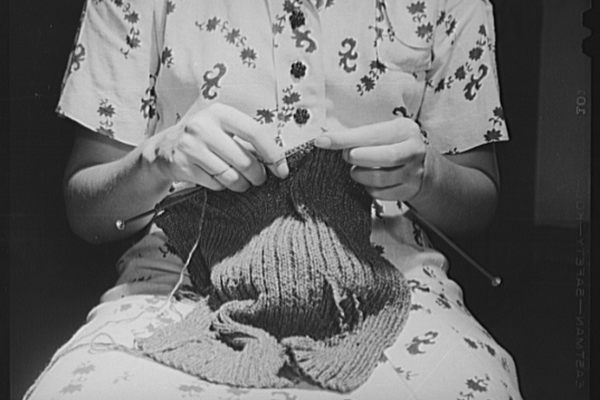During WWII, the Only Men Getting Plastered for Oscar Night Were the Statuettes

Bing Crosby and Barry Fitzgerald in Going My Way (1944). (Image: Public domain/Wikipedia)
“Boy, it’s heavy!”
Those were the opening words of Faye Dunaway’s acceptance speech when she won the Best Actress Oscar for Network in 1977. Estelle Parsons expressed the same sentiment at the beginning of her Best Actress speech 10 years earlier, as have many other winners over the decades.
Oscar statuettes are 13.5 inches tall and weigh eight-and-a-half pounds. That’s a hefty little metal guy to be clutching when you’re emotionally overwhelmed and being broadcast live(ish) around the world. But for three years during World War II, Academy Award winners bore a lighter load when they accepted their statuettes.
Due to the wartime metal shortage, Oscars awarded at the 1943, 1944, and 1945 ceremonies were the same size, but made of plaster.
Casablanca’s three Oscars, awarded in 1944, were made of plaster. (Image: @theacademy on Instagram)
”Oscar is now being cast in plaster and sprayed with deceptive bronze lacquer,” reported the New York Times in March 1945, calling the switched statuette “a $12 job made to look like the old $90 thing.”
Winners were given I.O.U. notes that allowed them to swap their fake Oscars for the typical metal versions once the war had ended.
The real Oscars, made of an alloy called britannia and plated in copper, nickel silver, and 24-karat gold. (Photo: @theacademy Instagram)
In the meantime, the fragile plaster statuettes were vulnerable to nicks, scratches, and, in one notable case, decapitation.
At the 17th Academy Awards, held in March 1945, Irish actor Barry Fitzgerald scored a win in the Best Supporting Actor category for his role as curmudgeonly priest Father Fitzgibbon in Going My Way. In the film, Fitzgibbon is irked by the arrival of a hip young priest named Chuck O’Malley, who is portrayed by Bing Crosby. O’Malley’s golf habit is particularly galling to Fitzgibbon. This is ironic when you consider that Fitzgerald accidentally lopped the head off his plaster Oscar while practicing his golf swing.
Crosby also won a plaster Oscar in 1945, after being awarded Best Actor for Going My Way. (In an unusual set of circumstances, he beat out Fitzgerald to do so. Fitzgerald was nominated in both the Best Actor and Best Supporting Actor categories for the same role in the same film, which was then within Academy rules.)
Other performers who received plaster Oscars during World War II included Ingrid Bergman for Best Actress in Gaslight, and Ethel Barrymore for None But the Lonely Heart. Unfortunately, the Academy Awards were not televised until 1953, so we have no way of seeing the winners’ reactions to their lighter-than-expected prizes.












Follow us on Twitter to get the latest on the world's hidden wonders.
Like us on Facebook to get the latest on the world's hidden wonders.
Follow us on Twitter Like us on Facebook